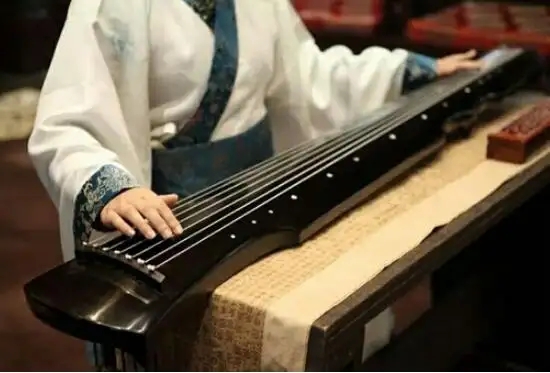Did the guqin emblem appear in the Qin and Han Dynasties?
It is generally believed that the emblem gradually appeared in the Qin and Han Dynasties. Is this correct?

It is generally believed that the qin emblem gradually appeared in the Qin and Han dynasties, because the earliest recorded document of the qin emblem was Ji Kang's "Qin Fu" in the Wei and Jin Dynasties. It records that "the emblem is based on the jade of Zhongshan", from which it is concluded that the appearance of the emblem should be in the Qin and Han Dynasties. I think this claim is debatable. We can imagine that if the emblem of the qin appeared in the Qin and Han Dynasties, then before the Qin and Han Dynasties, the guqin could only be played with scattered sounds. Because if there is no emblem, overtones and percussions cannot be used in large numbers. It is difficult for us to imagine that Confucius sang all the three hundred and five chapters of the Book of Songs under the circumstance that he could only play the scattered sounds. It is also hard to imagine that when Shi Kuang was playing the guqin on the ancient blowing platform, the world changed color, and Xuanhe came to gather for it. Of course, the discoloration of the world and the coming of a black crane are an exaggerated metaphor for Shi Kuang's superb performance skills and beautiful performance. Could it be that this kind of beautiful qin music can only be expressed with scattered sounds?
We have not found a clear record of the qin emblem in the literature before the Wei and Jin Dynasties, which does not mean that there was no qin emblem before the Wei and Jin dynasties. Therefore, I think the appearance of the emblem of the qin should be far earlier than the Qin and Han dynasties, and even can be traced back to the initial formation period of the qin. Because if the qin had no emblem and could not play overtones and press tones, it would have been replaced by se or other prose instruments with branch codes, and it would not have been passed down. So I think the qin had an emblem or a kind of mark at the beginning, and it was designed according to the unbranched instrument that can play scattered, percussion and overtones. Of course, these rights mentioned above are considered as personal guesses, and I will put them here for the time being, and will do research after more detailed information.
 渝公网安备 50010702504639号
渝公网安备 50010702504639号